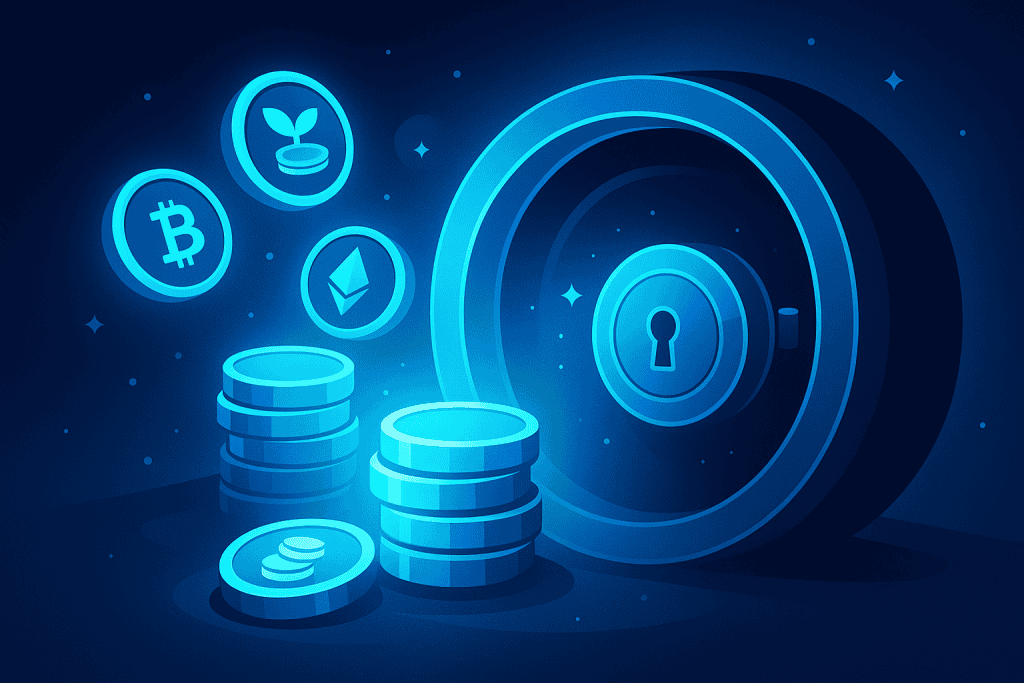
Crypto staking is transforming the way investors grow their assets in the crypto market. Whether you’re a seasoned blockchain enthusiast or a beginner exploring cryptocurrencies, staking offers a promising avenue to earn passive income. By locking up your crypto in a proof-of-stake (PoS) blockchain, you can earn rewards while supporting network operations. This step-by-step guide will help you understand how to stake crypto, its benefits, and the tools you’ll need to get started.
Materials or Tools Needed
Before diving into staking, ensure you have the necessary tools and resources. Here’s a quick checklist:
| Materials or Tools | Details |
|---|---|
| Crypto Wallet | A wallet compatible with staking, such as Ledger or Coinbase Wallet. |
| Cryptocurrency Assets | Proof-of-Stake (PoS) tokens like Ethereum (ETH) or Cardano (ADA). |
| Staking Platform | Reliable platforms like Coinbase, Binance, or StakingRewards.com. |
| Internet Connection | Stable and secure connection for uninterrupted staking processes. |
Step-by-Step Guide to Crypto Staking
Step 1: Understand How Crypto Staking Works
Crypto staking involves locking your digital assets in a blockchain network that uses a PoS consensus mechanism. This helps validate transactions and maintain the network’s security. In return, you earn rewards, usually in the form of the cryptocurrency you stake. Learn about different PoS tokens and platforms by researching resources like Coinbase or StakingRewards.com.
Step 2: Choose the Right Staking Platform
Selecting the right platform is essential. Centralized exchanges like Coinbase and Binance offer user-friendly staking options, while decentralized options provide more control. Check platform fees, rewards rates, and supported assets. For instance, platforms like StakingRewards.com allow you to compare staking yields across tokens.
Step 3: Acquire PoS Cryptocurrencies
Buy or transfer PoS coins like Ethereum, Cardano, or Polkadot to your wallet. You can purchase these tokens on exchanges such as Binance or Fidelity. Make sure your wallet supports staking for the specific token.
Step 4: Transfer Assets to a Staking-Compatible Wallet
Move your coins from an exchange to a secure wallet. For example, Ledger wallets offer excellent security for staking. Some platforms, like Coinbase, allow staking directly without transferring assets to another wallet.
Step 5: Initiate the Staking Process
Navigate to the staking option on your platform. Select the cryptocurrency you want to stake, and input the amount you wish to lock. Some platforms offer flexible staking (withdraw anytime) or fixed-term staking (higher rewards). Confirm the transaction to start earning rewards.
Step 6: Monitor Your Staking Rewards
Regularly check your staking dashboard to monitor your rewards. Many platforms update staking rewards daily or weekly. By tracking your assets, you can assess the returns and adjust your staking strategy as needed.
Do’s and Don’ts of Crypto Staking

Do’s:
- Diversify Your Staked Assets: Spread your investments across multiple PoS cryptocurrencies to minimize risks.
- Research Staking Platforms: Verify the platform’s reputation, fees, and reward rates before staking.
- Keep Assets Secure: Use wallets with robust security features like multi-signature authentication and hardware storage.
- Monitor Market Trends: Keep an eye on crypto market conditions and network updates for the tokens you stake.
Don’ts:
- Avoid Staking Incompatible Tokens: Ensure your assets are PoS tokens, as staking non-PoS coins is impossible.
- Ignore Lock-Up Periods: Be aware of staking duration. Fixed staking requires your funds to remain locked for a specific term.
- Underestimate Gas Fees: On some networks like Ethereum, gas fees can significantly impact staking profitability.
- Skip Reading Terms: Review the staking terms and conditions to avoid unexpected costs or risks.
Conclusion

Staking crypto is an innovative way to earn passive income while participating in blockchain security. By understanding how it works, choosing the right platform, and diversifying your assets, you can maximize your staking rewards. Start your staking journey today to unlock the full potential of your cryptocurrency investments.
FAQ
Why do economists study the data of economic indicators?
Economists analyze economic indicators to assess financial trends, predict future market behavior, and make informed decisions.
Can I stake crypto without a wallet?
Some platforms, like Coinbase, allow you to stake directly without transferring assets to a wallet. However, using a secure wallet is advisable.
What is the minimum amount required for staking?
The minimum staking amount varies by token and platform. For example, Ethereum requires 32 ETH for solo staking but less on pooled platforms.
Resources
BitPanda Academy. What is Staking?
Chainalysis Blog. Crypto Staking.
Coinbase Learn. What is Staking?
Fidelity Learning Center. Crypto Staking.
StakingRewards.com. Staking Rewards.
